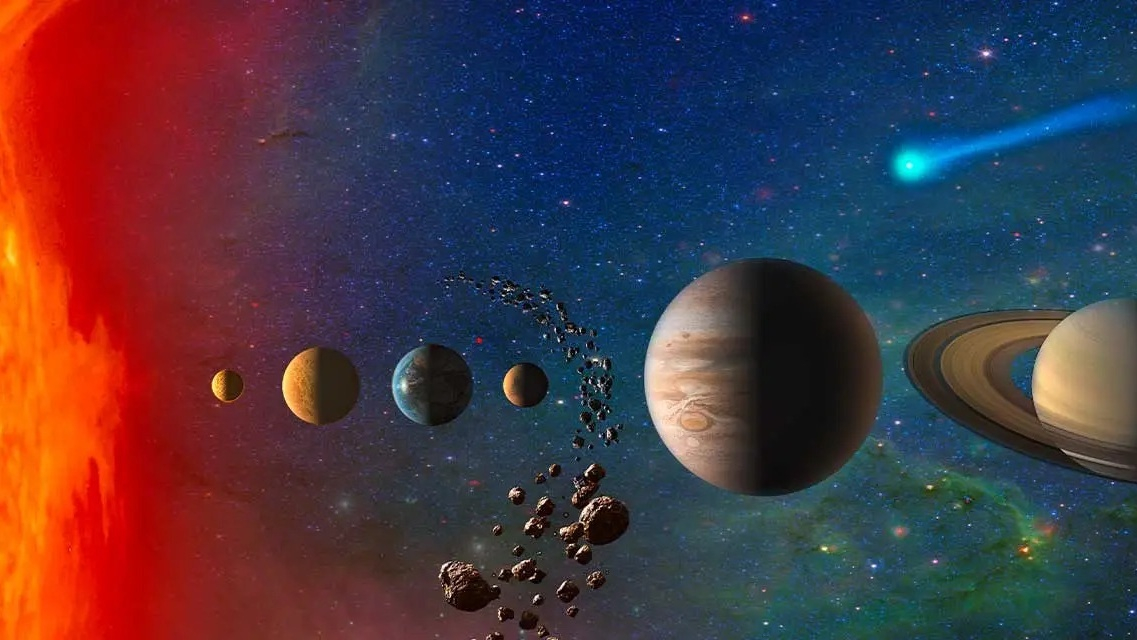A super-Earth beyond Mars would have made Earth nearly uninhabitable
There's something big missing from our solar system — and that may be a good thing.

Planetary scientists recently simulated an alternate version of our solar system: one with a super-Earth causing climate chaos on Earth, Mars and Venus.
One of the most common types of planets in our galaxy are worlds larger than Earth, but not quite as massive as Neptune. These super-Earths, as they're called, are nearly everywhere we look in the Milky Way — except, oddly enough, in our own solar system. However, according to Florida Institute of Technology planetary scientists Emily Simpson and Howard Chen, it's no surprise that we're sitting in a cosmic neighborhood without one of these planets.
If our solar system had a super-Earth, it's very possible we wouldn't be here in this article together at all.
By studying an alternate version of our own solar system, Simpson and Chen hoped to investigate how exoplanets might influence one another's orbits. Certain orbits of planets, for instance, may make their neighbors more habitable. As it turns out, if the inner reaches of a star system are home to a planet very much larger than Earth, the other planets are likely to experience weird orbits and wild climate extremes.
Related: NASA exoplanet telescope discovers 'super-Earth' in its star's Goldilocks zone
Simpson and Chen built computer simulations of what would happen if a super-Earth orbited the sun somewhere between the orbits of Mars and Jupiter. It's technically possible that our solar system might have turned out that way if something had gone just a tiny bit differently during its formative years, when the seeds of planets were just starting to coalesce out of the disk of dusty debris around the newborn sun. If, for example, the gas giants had grown slightly less — well, giant — there might have been room and material for a super-Earth just beyond Mars.
"The configuration that we end up with within the solar system is definitely not something that is indeed common," Chen told Space.com, but he adds, "While the chances of this happening in our own solar system is small, it could very well happen in many exoplanet systems."
Breaking space news, the latest updates on rocket launches, skywatching events and more!
What's the worst that could happen?
A super-Earth just beyond Mars would throw all the smaller rocky worlds of the inner solar system completely out of whack; the super-Earth's gravity would push and pull the other planets into eccentric (long and narrow) orbits, or even wildly tilted ones. Some of those orbits would also be constantly changing, never stable. On the surfaces of those planets, conditions would be tumultuous: tilted and eccentric orbits could both cause extreme summers and winters, and worlds with unstable orbits might swing rapidly in and out of ice ages.
Any life on such a world would need to be hardy and able to adapt quickly to dramatic changes in the environment. This may suggest that even rocky, Earth-size worlds in the habitable zones (the area around a star where temperatures are right for liquid water to exist on a planet’s surface) of other stars might be less than hospitable to life if they share their neighborhood with a super-Earth or two, because their climates may be dramatically unstable. And one thing life needs to evolve is at least a little stability — but also not too much. (Yeah, life is complicated.)
Simpson and Chen simulated several different versions of a hypothetical super-Earth called Phaedra — ranging from just slightly heftier than Earth to more than 10 times more massive — with a handful of different orbital trajectories. According to their results, the worst-case scenario for life in the inner solar system involves a planet between 10 and 20 times more massive than Earth.
"The more massive it is, the worse it gets," says Chen. "The highest mass was the worst in terms of changing the stability of the orbits of Earth and Venus and Mars, particularly the Earth." A super-Earth on a highly eccentric orbit would also be especially bad news for the inner planets, because it would be more likely to push or pull Earth, Mars and Venus into eccentric or tilted orbits.
Even a planet slightly larger than Earth in the space between Mars and Jupiter would make life on Earth very difficult — but not impossible.
"We might imagine that we have another planet between Mars and Jupiter that's maybe slightly above Earth's, maybe two Earth masses. We might experience more drastic weather. We might have more extreme summers and winters, but it still would remain, on average, quite habitable."

Kiona Smith is a science writer based in the Midwest, where they write about space and archaeology. They've written for Inverse, Ars Technica, Forbes and authored the book, Peeing and Pooping in Space: A 100% Factual Illustrated History. They attended Texas A&M University and have a degree in anthropology.
